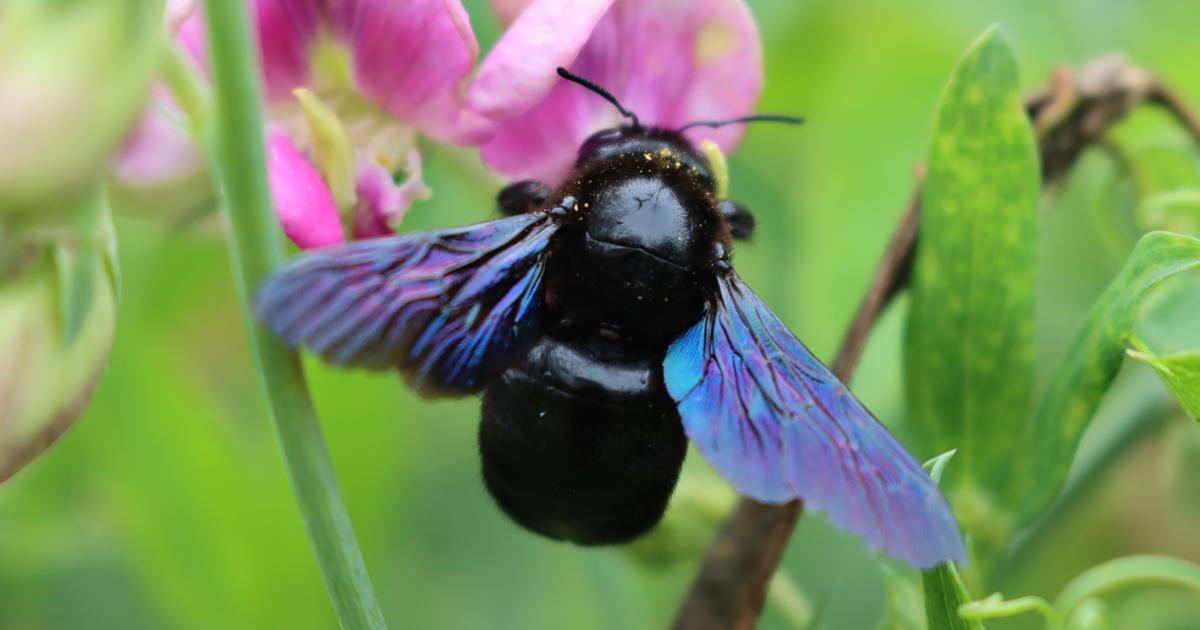The carpenter bee is an imposing pollinating insect.
Also known as the purple wood borer, it is the largest bee in Europe, and it lives in our gardens.
To discover
What to plant, sow or harvest in March?
How to recognize a carpenter bee?
The carpenter bee can be recognized at first glance, as it differs from the bee we are accustomed to encountering: no yellow on a carpenter bee.
It looks like a large purplish-black bumblebee.
At most you will be able to see a small pink/purple line on the tips of the males' antennae.
With a wingspan of 5 cm, wings spread, and a length of 3 cm, the carpenter bee does not go unnoticed when it arrives.
Its buzzing is also proportional to its waist size.
It is a solitary bee that loves warmth, sun and flowers.
She loves plants of all kinds, but has a preference for lavender, sage and wisteria.
Did you know ?
The female carpenter bee has a head narrower than the thorax and the male has two orange to pink articles near the tips of its antennae.
Where do carpenter bees live?
As they are solitary, carpenter bees do not live in colonies.
The only meeting between conspecifics takes place during the nuptial flight when males and females mate.
We therefore do not find them in a hive;
the carpenter bee nests in wood.
Using its powerful mandibles,
Xylocopa violacea
digs galleries of several tens of cm in dead wood, fire logs, fence posts, but also frames (hence its name).
What is the life cycle of the carpenter bee?
During the nuptial flight, a female carpenter bee is impregnated by several males who disappear as quickly as they came.
She then lays her eggs in the cells that she has previously dug within the nest.
The eggs then pass into the larval stage then that of chrysalis before becoming imago (adult bee) and going out to explore the world.
This cycle takes place over a period of seven weeks, and young carpenter bees are generally born around the end of August.
Are carpenter bees dangerous?
Although its size may impress many, the carpenter bee is completely harmless.
The males do not have a sting, so you do not risk anything with them.
Females may sting, but only when they feel threatened or you are too close to the nest.
If you see a purple wood borer in your garden, do not chase or kill it.
It is one of the most useful pollinating insects to Mother Nature, and like many of them, the carpenter bee suffers from intensive agriculture and becomes an endangered species.
Plant a flower bed for it and admire its flight, certainly a little noisy, but always majestic.

